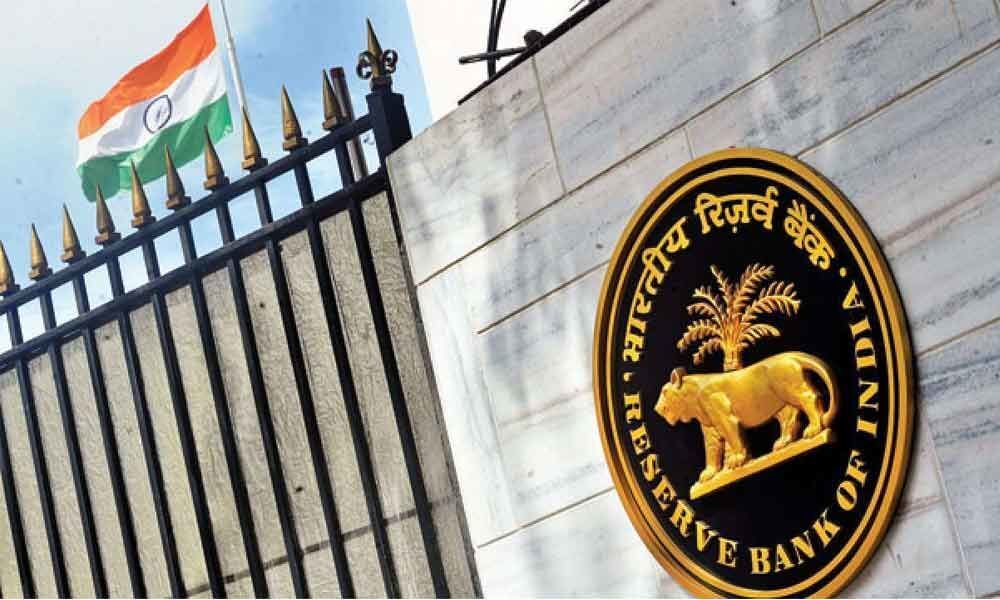Live
- Gurugram civic polls: Congress announces mayor, councillor candidates
- CM Revanth Reddy Urges Civil Servants to Adopt a Proactive Approach in Solving Public Issues
- New Delhi station tragedy: Railways denies platform change or special train cancellation
- Dharmendra Pradhan takes holy dip at Triveni Sangam in Prayagraj
- Nominations for Prime Minister’s ‘Yoga Awards 2025’ now open
- J&K: Brief exchange of fire along LoC in Poonch sector
- TPCC Defends Revanth Reddy’s Remarks on PM Modi’s Caste, Hits Back at BJP
- KTR Accuses Congress Government of Neglecting Gurukuls, Claims Institutional Collapse
- Progress of country, tribals are inter-linked: President Murmu
- FIH Women’s Pro League: England thwart India fightback, win bonus point in shootout
Just In
Debt-led growth won't last for long


A mad race for reducing interest rates is afoot these days. United States’ President Trump has persuaded the US Federal Reserve Board to reduce interest rates after a period of about eight years.
A mad race for reducing interest rates is afoot these days. United States' President Trump has persuaded the US Federal Reserve Board to reduce interest rates after a period of about eight years.
Trump wants the Fed to reduce these more — and fast. The Central banks of New Zealand, Thailand and India have also reduced the interest rates. China has not officially reduced these, but unofficial reports indicate that it has done the same.
Thinking is that lower interest rates will persuade the consumers to take loans to buy a bike or TV. This will lead to generation of demand for these goods in the market.
On the other hand, lower interest rates will also make it profitable for businesspersons to take loans in order to establish factories. In this way a fortuitous cycle of increased demand by consumers and increased supply from businesspersons will be established leading to higher economic growth rate.
However, the question is whether the economic growth can be jumpstarted by a reduction in the interest rates?
Let us take the example of the United States. Is the recent increase in growth rate and reduction in unemployment really due to the lowering of interest rates?
A report by the American Banks Association says that while unemployment is less in the country, it is accompanied with lower wage rates and increased debt of the consumers.
The reduction of unemployment rate means that certain individuals who were unemployed till now have found jobs. But the question is would the employed workers facing reduced wages borrow and spend?
Would you take a loan to buy a bike or a TV if you were earning, say, Rs 10,000 per month till recently; and now you are earning Rs 8,000 per month? Most unlikely. A consumer takes loan only when she/he is confident that future earnings would make it possible to repay the loan.
That is hardly possible if the wages are reducing. Taking of loans by the US' consumers is even more surprising because America is not able to increase the exports of its goods as seen in the deepening trade war with China.
The jobs that are being created and that are leading to the reduction in unemployment rate are not coming from export competitiveness. The question is this: How come we are seeing an increase in debt-led consumption despite reduction of wages and stagnant competitiveness.
The solution to this riddle is that President Trump has created a sense of positive feeling towards the future. His repeated statements that he with "Make America Great Again" are rhyming with the consumers.
They are overlooking the reduction in their wages and basing themselves on the hope of a better future as promised by Trump. They are borrowing and consuming goods in the hope of this better future leading to higher economic growth.
Conclusion is that the economic growth in the US is being driven not by lower interest rates but by Trump having instilled a sense of confidence in future.
The debt of the US government is rising in tandem with household debt incurred by the consumers. Trump has reduced the Corporate Tax and Income Tax payable by the rich.
This has led to stagnation in the revenue receipts of the US government. The annual revenue receipts were US Dollars 3.3 trillion in 2017 when Trump assumed the Presidency. This rose marginally to 3.4 Trillion dollars in 2019.
In the same period, the expenditures of the US government increased from 3.9 trillion dollars to 4.5 trillion dollars. An increase of 0.1 trillion dollars in revenue came along with an increase in 0.6 trillion dollars in the expenditures.
It is clear that the US government is taking loans from the global financial markets to finance its expenditures. Thus, the true sources of the economic growth in the US today are twofold.
One, Trump has instilled confidence among the consumers to borrow and spend in the hope of a better future; and ordered his government to borrow and spend. Two, the US consumers and the US government are borrowing and spending in the hope of a better future.
The growth is primarily driven by debt. The reduction in interest rates may have had a minimal impact, if at all. Consumers and businesspersons are willing to take a loan and consume or invest only if they have confidence in future — which has been so well created by Trump.
It should be obvious that this party of borrowing-and-spending cannot go on indefinitely, more so when the consumers are facing reduced wages and the government is facing stagnant revenues. There is a saying in economics: "There is no such thing as a free lunch."
Thus, the spree of borrowing has to come to an end. No wonder, there is a consensus among economists that reduction of interest rates will not salvage the global economy.
There will come a time when the lenders will realise that the US consumers and the US government will not be able to repay the amounts borrowed. The confidence instilled by Trump may vanish into thin air and the entire edifice of the US economy may come crashing down.
Thus, the International Monetary Fund has said that the present global economic growth is "vulnerable." We have to assess the efficacy of the reduction in the interest rates by our Reserve Bank against this backdrop.
The American experience tells us that the driver of growth is confidence in future coupled with heavy borrowings. The reduction of interest rates will not encourage the consumers and businesspersons to borrow unless they have confidence in future.
Know that the Reserve Bank has reduced the interest rates many times in the recent past, but the economy continues to slide down. The clear message is that the primary driver of the economy — which is confidence in future — is lacking.
Cheap loans do not drive the economy on their own. A sick person would hardly take a loan to buy a house.
Therefore, our government should converse with the consumers and businesspersons and deal with their hesitations so that the fortuitous cycle of increased demand and supply can be established.
Author was formerly Professor of Economics at IIM Bengaluru

© 2025 Hyderabad Media House Limited/The Hans India. All rights reserved. Powered by hocalwire.com






